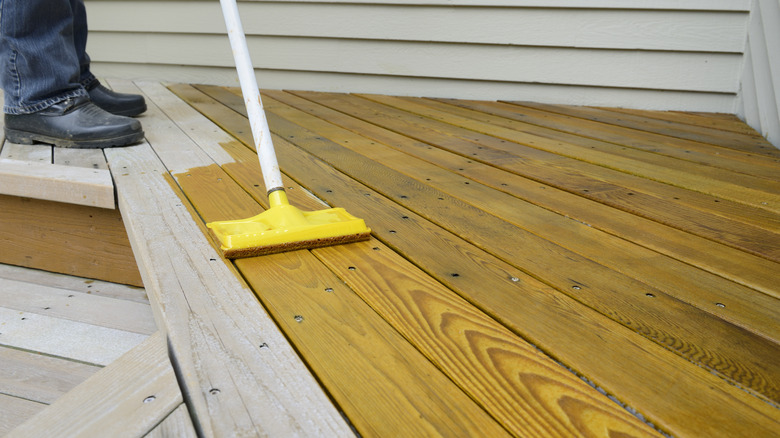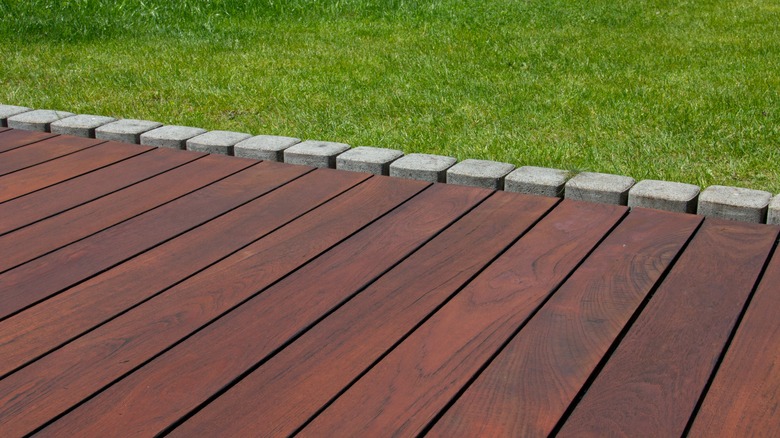A Smarter Alternative To Painting Outdoor Wood
Painting outdoor wood features, such as decks, fences, and planters, can be a real challenge. This is especially true if you are dealing with weathered or rough surfaces that need sanding and cleaning beforehand. The process of painting outdoor wood typically involves multiple steps, including priming and applying multiple coats of stain. And, of course, you also need to wait for the right weather conditions for painting; otherwise, your paint might bubble, peel, or chip off. When you also factor in the time and physical effort it takes to paint, it can become a daunting task. There is a smart alternative to painting outdoor wood that you may not have yet considered — purchasing pressure-treated wood that already has a natural tint or has been pre-stained.
While this hack won't help to revitalize or change the color of your existing outdoor wood structures, it's something to consider before starting a new project. Color options are limited for pressure-treated wood, but with a little effort and some creative planning, you might be able to find something that will work for your project. Pre-tinted wood can be used for a variety of projects, from building a wooden planter to constructing an entire deck. Of course, there are important things to consider when buying pre-tinted lumber for your next project. If, after reading through the color options and special considerations, you find pre-tinted wood isn't for you, there is another option you might want to consider.
Color options, considerations, and a more colorful alternative
Instead of staining your outdoor wood with a medium brown-colored wood stain, you can purchase pre-oiled, thermally treated ash decking boards from Home Depot. A richer-toned deep brown pre-stained option can be found online at Arbor. Pressure-treated Douglas fir lumber is available at multiple outlets and features a natural green tint that adds color to your project. It can take some effort to find lumber with the desired tint, though. It's a good idea to browse wood stains and choose your lumber based on the right stain color for your space. For example, if you like a stain that's labeled "redwood tone," you can look for redwood lumber for your project instead. It's important to note that even though you are buying lumber that already has color to it, you will still need to apply a layer of wood stain to protect it from the elements if its not pre-applied.
If you can't find your desired tone, there is another alternative to consider. Poly lumber has a similar look to wood, but is made from recycled HDPE (high-density polyethylene plastic). It comes in a broader range of colors than its wood counterpart and you can build anything from outdoor furniture to decks with it. Plastic lumber requires the same tools for construction as real wood. So, your project can continue with no major alterations. A downside to poly lumber is that, if you end up not liking the color, it can't be re-stained.

